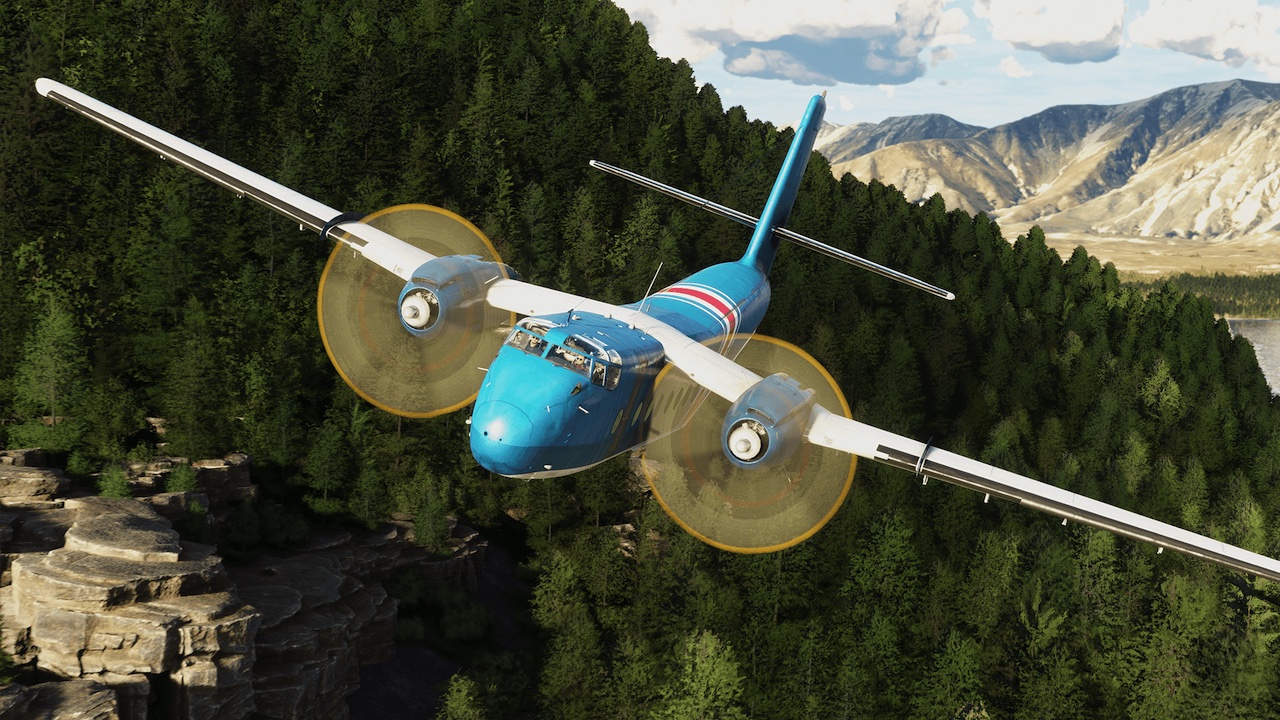– The hangar description now appears for all liveries and not just the default one.
– The FWD and AFT LIMIT labels no longer overlap in the Weight and Balance screen.
– The gust lock now prevents the ailerons from moving.
– Cockpit quickviews left and right have been corrected.
– The world map flight plan now carries over / loads in the GPS.
– Direct-to waypoints now populate the GPS’s Info page.
– The bearing pointer no longer spins 360-degrees to re-align with navaid / waypoint.
– The GPS is now connected to bearing pointers and CDIs on the instrument panel.
– The windows no longer flicker when viewed behind other glass in External view.
– There should now be less difficulty starting the engines by following the Starting Engine checklist.
– Turning on the generator have been added to the Before Taxi checklist.
– The success condition for Throttle Engine 2 in the Run-Up checklist has been corrected.
– Oil temp has been adjusted. It should no longer be “too high.”
– The amount of drag produced by the flaps and landing gear have been increased.
– The animation of the rain drops on the windscreen has been corrected.
– The cargo net now correctly draws in front of the window in the cargo area.
– Texture clipping on the cargo ramp with the “Blue with White and Red” livery has been fixed.
– The break in the aircraft’s exterior texture at LOD4 has been fixed.
– Taxi lights have been adjusted to provide some more forward visibility.
– Cockpit lights should now be on after restarting a flight.
– The Stall Warning Test switch now works. Moving it to either the left or right will cause the stall warning to sound.
The Caribou first flew on July 30, 1958, and was introduced into mainline service in 1961. De Havilland built a total of 307 Caribou planes, with the majority going into military service, and the rest serving civil missions. 32 countries’ militaries flew the Caribou, including that of the United States. Designated first as the CV-2 and then as the C-7, the United States Army and the United States Air Force operated a total of 159 of the planes. Spain, Kenya, India, and Australia also used the airframe until 2009.
The DHC-4, crewed by two pilots, can carry up to 32 troops and their gear along with 8,000 pounds of cargo or some combination thereof. The Caribou has a distinct, utilitarian look, featuring a long, narrow fuselage with a rear cargo ramp and elevated tail section, allowing for easy and efficient loading and offloading of equipment and personnel. It can also execute in-flight drops of equipment and / or paratroops on demand. The empennage is a cruciform design, with a large vertical stabilizer and rudder for low-speed yaw authority and it has a retractable tricycle undercarriage with long landing gear legs for use in remote, rustic airfields.
The high aspect ratio design of the main wing is mounted on the forward of the fuselage and has full-span, double-slotted flaps. The wing has a polyhedral, inverted gull form and supports its two radial engines in nacelles that also serve as mounts for the main landing gear. Finally, the aircraft is powered by two Pratt & Whitney R-2000 Twin Wasp 14-cylinder radial piston engines that each deliver 1,450 horsepower and turn a 3-blade Hamilton Standard constant-speed, reversible-pitch propeller.

